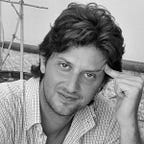Organizing by Nature — chat #1
Exploring why the right moment for this conversation is now
This article is part of the Organizing by Nature publication. If you like it, please share the publication with anybody interested in this conversation.
Why is it important to talk about the organizing of human systems? And why now?
25 years ago seeds have been planted. Today, you can feel their movement.
In every generation, people question how things are done, including how we devise our organizations. Our world-view is evolving, and the way we organize actualizes it. There is a new world-view coming up. And it’s emerging because it is needed. The soil is now ready.
At the same time, this crucial moment calls for having a multi-generational perspective. Every generation focuses on different factors. If we are going to organize systems to produce and enable what we need, it is vital to understand the full spectrum of underlying motivations. We need all of them.
Organizations are created to operate at the rate of change in their environment. Any living organism needs to adapt in synch with its environment, or it can’t keep existing in its form.
Today, the rate of change is changing.
We are more aware of more things, and faster. This leads to an exponentially growing need for integration. Today’s new generations need to be capable of exponential integration, and so do today’s organizations. For this purpose, roots and continuity are indispensable, they are needed to stay alive within this rate of change. So which are the elements of continuity? Where do we look for them while we integrate the new? It is possible that seeing past, present and future integrated together is the key.
Organizing and designing is something that you do at this moment for a moment in the future. So you start thinking about the future and then you come back to the now for acting. This journey across the present and the future is vital. We need an open conversation on why and how we need to organize. Usually, people skip the “how” and jump to the solution. They jump from “we need a different organization” to “here is the solution”.
Nature already knows how to make something that is at the same time simple and complex, it has trillions of years of experimentation in unpredictability. We could build on that, trusting the ability of human beings to rely upon complexity. In a seed, for example, you have total simplicity and the highest potential of complexity. In design, this is the equivalent of using principles.
All this is not new. Others have worked on this same stream since decades ago. We can build on the continuity. They are there. We don’t need to invent them.
Principles are theory and practice, they are dreams. They are not fixed things. They are like Nature, ever-evolving. We should start with the principles. Principles are generative. What is generated by the same principle is different depending on the context and the moment. Give people the seed and trust them to nurture it. If you give people principles, instead of rules or defined scripts, they have to learn how to be in the moment, how to feel the emerging uniqueness of the situation.
Organizing requires conscious thought.
This chat between Stelio Verzera and Paul Tolchinsky is part of the Organizing by Nature stream. Just subscribe to the publication to follow its evolution.
Before you go, if you’ve found value in this post please give it some claps.
And if you want to stay in the loop, follow Stelio on Twitter.
Stelio is a curious and active contributor to the global community evolving the concept and practice of work in this decade. If you’d like to know more about him, start here.
